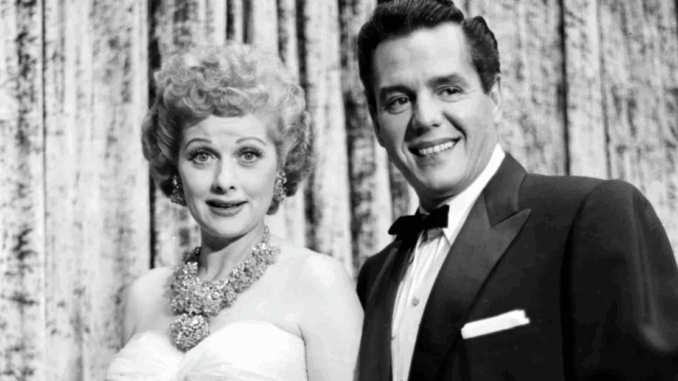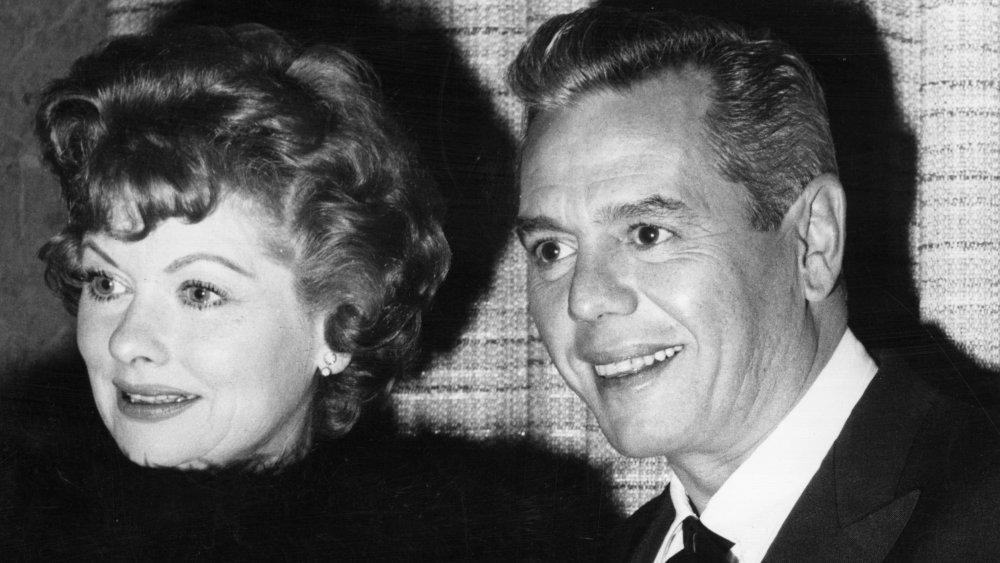
He Lucy loved — and the small screen.
He was Desiderio Alberto Arnaz y de Acha III from Santiago de Cuba, but you might remember him as Ricky Ricardo on “I Love Lucy,” telling his madcap wife week after week that she’d have “some ‘splainin’ to do.”
In fact, if not for Desi Arnaz, you might never have heard of Lucille Ball. Before meeting him, she’d tried everything to become a star. She dyed her hair blonde to model for Hattie Carnegie. She changed her name to Diane Belmont to kick in a chorus line but was fired by Florenz Ziegfeld Jr. Then she became a Chesterfield girl, selling cigarettes in nightclubs. In Hollywood, Ball dyed her hair red but never made it beyond B-movies until 1950, when she met the Latino bongo drummer Arnaz. He was eight years younger, but the attraction was immediate, and they eloped months later. The only problem: She believes in monogamy. He didn’t.
A creative genius, Arnaz founded Desilu Productions and transformed the entertainment industry, according to Todd S. Purdum’s new biography, Desi Arnaz: The Man Who Invented Television. From 1951 to 1957, Arnaz directed, produced, and appeared in 181 episodes of “I Love Lucy,” the most popular television series in America at the time.
By developing a multiple-camera setup that uses adjacent sets in front of the show’s live audience, Arnaz pioneered the standard for all situation comedies. His innovative use of 35mm film enabled every TV station in the country to broadcast high-quality images of the show, which had been impossible previously because stations relied on kinescope. (Videotape had not yet been invented.) In addition to “I Love Lucy,” Arnaz produced “The Ann Sothern Show” and “Those Whiting Girls” and was involved in several other series, including “The Untouchables,” which launched the career of Robert Stack.
The most touching segment of Purdum’s book is Stack’s appearance at the Kennedy Center Honors in 1986, when he walked onstage carrying a sheet of paper. He looked up to where the honorees were seated and read a message to Ball that Arnaz had written for the show five days before he died:
“I Love Lucy had just one mission, to make people laugh,” the speech began.“Lucy gave it a rare quality. She can perform the wildest, even the messiest physical comedy without losing her feminine appeal. The New York Times asked me to divide the credit for the show’s success between the writers, the directors, and the cast. I told them to give Lucy 90% of the credit and divide the other 10% among the rest of us. Lucy was the show…P.S. ‘I Love Lucy’ was never just a title.”
The comedienne, by then married to Gary Morton, covered her face as she began to cry.

So much self-destruction is seeded into the life story of Arnaz that it’s painful to read of his downward plunge. He was arrested more than once on charges of public drunkenness and became as well known in whorehouses as he was in police stations. Purdum writes that Arnaz was unrepentant about his carousing:
“a sign of the depth of the self-destructive behavior he not only couldn’t control but remained unable to acknowledge, even after it had destroyed his marriage.”
A devout Roman Catholic and staunch Republican who supported Richard Nixon and Ronald Reagan and befriended right-wing Hollywood gossip columnist Hedda Hopper, Arnaz placed copious bets alongside his friend J. Edgar Hoover, the FBI director, at the Del Mar Racetrack in California. That friendship did not spare him Hoover’s outrage over the ratings success of “The Untouchables,” which celebrated the exploits of Eliot Ness. Hoover aides contacted Arnaz several times, expressing “the Director’s displeasure over the show and its perversion of FBI history.”
Hoover wasn’t the only one ranked by “The Untouchables.” Frank Sinatra, then a Desilu tenant, was also enraged and decided to seek revenge for his mafia pal Sam Giancana. I recount the following scene inHis Way: The Unauthorized Biography of Frank Sinatra, when Arnaz is driving to his Indian Wells Country Club, where Sinatra is waiting for him to arrive:
“Hi ya, dago,” shouted Desi when he saw the singer. Sinatra told him what his Italian friends thought about the show that made Italians gangsters. “What do you want me to do — make them all Jews?” Then, Arnaz, very drunk, said in his thick Cuban accent, “I remember you when you couldn’t get a yob…So why don’t you just forget all this bullshit…Stop getting your nose in where it doesn’t belong, you and your so-called friends.” Sinatra backed down.
A Cuban refugee (“I was no immigrant”), Arnaz, who never wanted to leave his homeland, was forced to flee to Miami, where he attended high school with Al Capone Jr., the only child of the Chicago mobster. As a teenager, Arnaz lived in a garage with rats and earned money cleaning canary cages. Eventually, he would achieve the American Dream of riches and success, but it would be short-lived. Having smoked two packs of cigarettes a day, he was diagnosed with lung cancer and died at the age of 69.
Working alone, Ball’s career sputtered as Arnaz’s collapsed. “The simple truth is that neither Lucy nor Desi ever achieved anything alone that approached the artistic achievement they enjoyed together,” concludes Purdum. “Their collaboration was lightning in a bottle, a once-in-a-lifetime combination that could never be recaptured but has been preserved forever, thanks to Desi’s insistence on putting ‘I Love Lucy’ on high-quality film.”
The preservation of those films has enabled millions of people around the world to enjoy reruns of Lucy and Ricky and Fred and Ethel with no ‘splainin’ needed.
Kitty Kelley is the author of seven number-one New York Times bestseller biographies, including Nancy Reagan, Jackie Oh!, and Elizabeth Taylor: The Last Star. She is on the board of the Independent and is a recipient of the PEN Oakland/Gary Webb Anti-Censorship Award. In 2023, she was honored with the Biographers International Organization’s BIO Award, which is given annually to a writer who has made major contributions to the advancement of the art and craft of biography.
